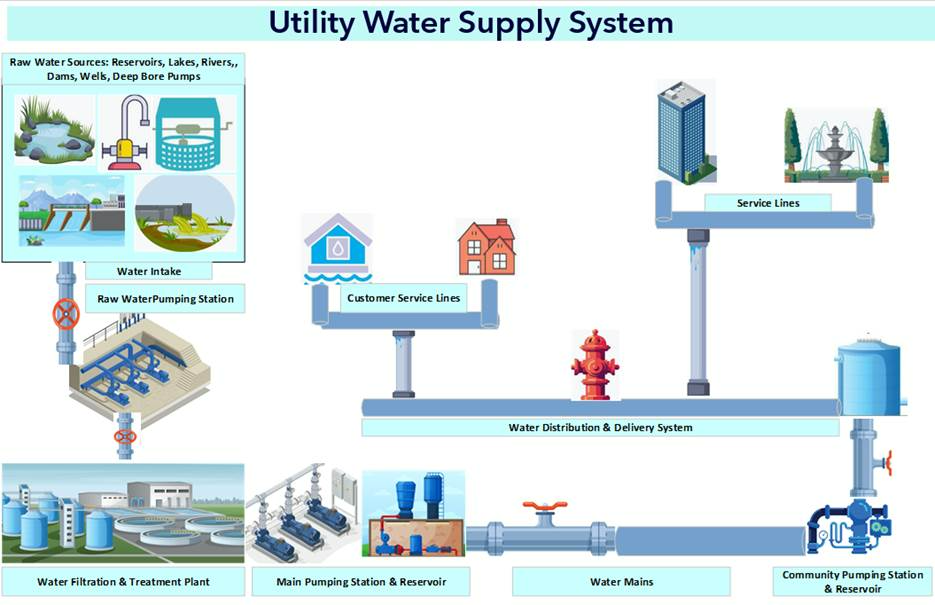Utility Water Supply Systems—Losses, Analytics & Insights
By Satish Saini, HEXstream utility industry specialist
Water-supply utilities play a vital role in providing potable, clean, safe and reliable drinking water to communities, while also protecting the environment. The whole process ensures public health and environmental sustainability through raw water sourcing, filtering, treating and distributing potable water through a vast and widely scattered water-supply infrastructure.
If you work in this space, you understand the complexity involved. And as a water consumer, you appreciate service so reliable that you rarely have to think about it.

Issues and impacts: The whole US water-supply system is facing issues related to high levels of losses through leakages, system breakdowns, and unauthorized usage. Consider also the aging water-supply infrastructure and the slow adoption of measurement/monitoring/automation technologies in water-flow analytics and loss detection. These factors undermine reliability and system performance, and increase O&M costs for utilities. There there is the misuse of natural resources and poor economic performance, which can lead to utilities missing sustainability and profitability targets.
Infrastructure: The key components of this complex system include raw water sources including reservoirs, lakes, rivers, dams, water wells, etc. Water-intake pumping systems take this raw water to water filtering and treatment plants, along with supplies further through pumping systems, reservoirs and watermains piping to communities. There it (again) goes through field/community pumping stations, reservoirs and is then delivered to final end consumers through distribution piping systems and customer-service lines.
Water losses: As reported years ago in a World Bank study, every year more than 32 billion cubic meters of treated water physically leak from urban water-supply systems around the world, while 16 billion cubic meters are delivered to customers for zero revenue. And a similar UNICEF report noted that many Middle Eastern and North African countries are at extreme risk of water scarcity in the near future. And the American Water Works Association (AWWA) reports that most of USA’s drinking water infrastructure/pipes will need to be repaired or replaced by 2040.
These high levels of losses and our aging water-supply infrastructure are triggering the need for not only upgrading systems, but also embracing technologies like advanced metering, monitoring and sensing devices, digitization and digitalization with AI and data-driven analytics and insights on assets performance and system losses.
Our needs for water are not going to change in the near future. Our methods for delivering that water must.
*See the first installment in this water series here. In our next water fearture, we'll focus on the types of losses, including physical losses, apparent losses and non-revenue water (NRW). We'll highlight emerging technologies to detect and reduce losses for improved overall system efficiency and utility sustainability and profitability.
